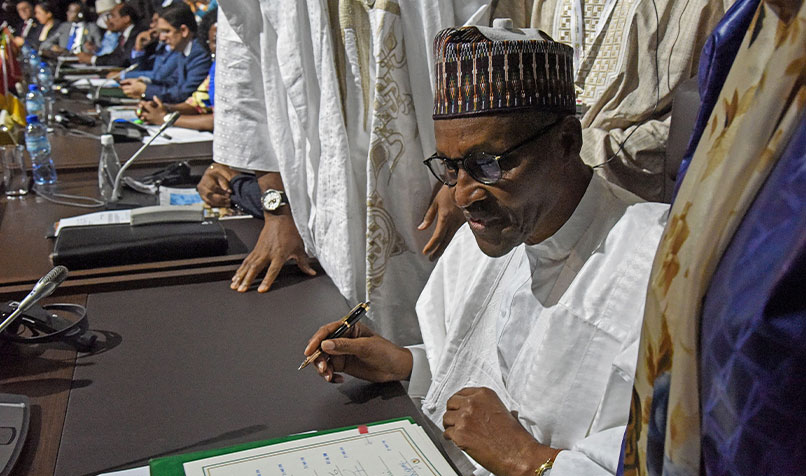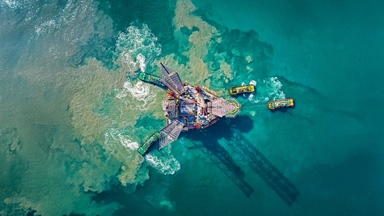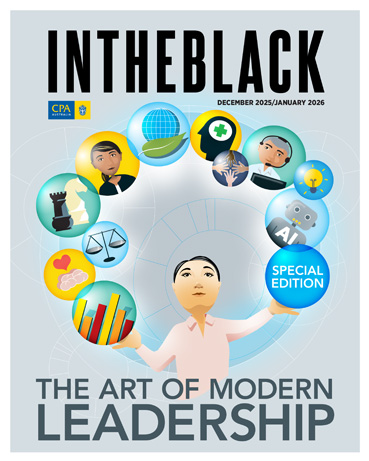Loading component...
At a glance
- SSA is developing the world’s largest free-trade area, presenting opportunities for foreign businesses and investors.
- Forecasters expect the area to register economic growth in 2025 and 2026.
- A booming natural resources market is the driving economic force in the region.
There is a mood of cautious optimism in Sub-Saharan Africa (SSA), as analysts predict the resource-rich region will register significant economic growth during the next two years.
Against a backdrop of falling inflation for some countries and the potential for higher private consumption and investment, the World Bank predicts growth in SSA to firm to 4.1 per cent in 2025 and 4.3 per cent in 2026 after hovering around 2–3 per cent in recent years.
“This is attributed to easing of financial conditions domestically and globally, along with lower inflation rates,” says Andrew Dabalen, chief economist for the Africa region at the World Bank.
He notes, though, that growth will remain uneven across countries in the region.
“The largest two economies, South Africa and Nigeria, will continue to grow at a slower pace than the rest of the region,” he says.
However, the outlook is not being viewed through rose-coloured glasses. High inflation in recent years, along with debt vulnerability, food insecurity and high levels of poverty, have afflicted an area that can now enjoy momentum towards becoming the world’s largest free-trade zone.
On the rebound

Making sweeping predictions about the SSA economy is complicated given it is not one economic bloc; the Economic Community of West African States and the Southern African Development Community are just two of the more prominent trading blocs in SSA.
Nevertheless, a part of the COVID-19 recovery, Deloitte Africa’s economic advisory practice leader, Tewodros Sisay, believes the region is poised for a notable economic rebound this year.
“We estimate GDP growth will be around 4 per cent across the continent, and East Africa will continue to be the fastest-growing region, driven by the services sector, industry expansion, continued investment in infrastructure and real estate, as well as power projects,” Sisay says.
"The region is home to the fastest-growing economies in the world and, despite global economic challenges, many countries in Africa have shown resilience and consistent growth."
He adds that foreign direct investment (FDI) will be a major contributor to growth this year, especially in areas such as renewable energy, fintech, technology and telecommunications, agricultural processing, pharmaceuticals and logistics. “This will offer significant opportunities to investors, and this will also be driven by intra-regional trade.”
There is growing pushback against FDI influence in Africa, with domestic workers often facing a glass ceiling because foreigners take a larger share of senior positions.
Yet, Africa is rich with natural resources, and competition between the US, China and the United Arab Emirates to access these assets and secure mining rights will shape FDI on the continent, according to Sisay.
“This will also have an impact on the logistics sector … These minerals are crucial to global energy transition and digital transformation. Therefore, this sector will play a key role in 2025, driving growth and FDI.”
Going for growth

The largest economies in Sub-Saharan Africa — South Africa, Nigeria, Angola, Ethiopia and Kenya — are all expected to register growth in 2025, according to Deloitte Africa. However, the pace of growth will be mixed.
Deloitte predicts that Ethiopia will lead the region with 7.8 per cent GDP growth on the back of infrastructure development and a growing industrial base. Kenya should expand 5.3 per cent, benefiting from robust investments in real estate, power and services. Nigeria can anticipate 3.4 per cent growth
as it leverages its natural resources and grows its fintech and logistics sectors. Angola is projected to grow at 3.2 per cent, thanks mainly to its oil and gas sector. South Africa is in line for modest growth of 2.6 per cent.
While structural issues run deep, Sisay notes that investor sentiment and domestic confidence are on the rise in South Africa following elections last year, but that “structural reforms and growing fixed investments are imperative for South Africa’s long-term prosperity and growth”.
Dabalen believes that, on the back of receding inflation, a gradual easing of policy interest rates among countries in the region should enhance household consumption and investment in 2025 and 2026.
"Africa has made significant strides in expanding access to education. Right now, the opportunity is even greater than ever — the children of today will be part of Africa’s future workforce, which is expected to nearly double by 2050."
“Government spending across the region will still be restricted by the limited fiscal space that results from high levels of public indebtedness and rising borrowing costs,” he says. “Progress in fiscal consolidation will continue, although at a moderate pace.
Primary deficits are narrowing more rapidly thanks to declining deficits in non-resource — rich countries and rising surpluses in commodity-exporting countries.”
One of the drivers of SSA growth is likely to be the African Continental Free Trade Area (AfCFTA). Set up in 2019 to strengthen Africa’s economic status and stability, it sends a strong signal to the international investor community that the region is open for business and has a single rule-book for trade and investment.
To date, 48 “state parties” have ratified the AfCFTA agreement, although only a handful of those have so far started trading under its mechanisms and protocols. By boosting intra-African trade and reducing tariffs, Sisay says AfCFTA will foster industrialisation, create more efficient supply chains, and expand opportunities for small-and medium-sized enterprises.
Down to business
SSA’s growth trajectory presents immense opportunities for accountants, finance professionals and business leaders.
“The region is home to the fastest-growing economies in the world and, despite global economic challenges, many countries in Africa have shown resilience and consistent growth,” Sisay says. “Urbanisation and a growing middle class are also creating demand for financial services, consumer goods and infrastructure, making it suitable for businesses.”
Given that many sectors in the region are not fully developed, including financial services, technology and manufacturing, and labour relations are problematic, Sisay says there is a role to play for firms and professionals to address many of these challenges through products and services, financial management and assisting regulatory compliance.
He notes that FDI has also created opportunities in many sectors that demand professional support, while emerging capital markets are providing advisory opportunities in markets such as South Africa, Nigeria and Kenya.
“Ethiopia has just established its first stock exchange, opening new frontiers in capital markets,” Sisay adds. “Digital transformation through the rise of fintech and mobile banking, as well as the growing tech sector, also require the support of innovative businesses and professionals.”
Risks and volatility

On the flip side, there are some risks associated with doing business in parts of SSA. This was highlighted last year when Australia-based Resolute Mining agreed to pay US$160 million to the Mali Government in a bid to free the company’s CEO and two other executives who were detained over a tax dispute.
More broadly, the World Bank warns that there are threats to the growth outlook for SSA from global and domestic developments. Dabalen says global growth could be affected by heightened trade policy uncertainty, which in turn may result in further geoeconomic fragmentation that affects export-oriented economies in the region.
More trade barriers and retaliation between trading blocs, as a result of intensified protectionist measures, could also dampen economic prospects.
There is also the continued risk of political insurrection, particularly in Central and Equatorial Africa.
Dabalen adds that weaker growth in China could reduce the demand for metals and minerals. “Lower prices for these commodities, which are the main exports of many countries in the region, would significantly limit growth prospects.
It could also affect Chinese investments in the region.”
SSA could face other headwinds, according to Sisay, who highlights political instability in the region as many countries face uncertainty, conflict and unstable governance.
“Another risk stems from frequent policy changes and weak institutions, leading to an unpredictable business environment in which the cost of doing business is increasing,” he says. “Geopolitics has been a huge challenge for Africa, and it will continue to be in 2025.”
The other well-publicised threat is inflation. Despite positive signs in some countries, Deloitte’s research suggests Africa will have the fastest-rising inflation of any continent in 2025, averaging about 16 per cent.
Close to 30 countries will be under International Monetary Fund programs, indicating that these markets are still grappling with macroeconomic challenges emanating from currency depreciation, global commodity price volatility, increased costs of imports and local production, and higher public debt.
The increased cost of serving debt will restrict governments from investing in much-needed projects that can stimulate further growth, Sisay says. “Consumers will also continue to be strained, exacerbating cost-of-living challenges. Furthermore, geopolitical tensions, as well as the impact of climate change, will impact sustainable development.”
Inflation, interest rates and recession: understand the cycle
Untapped potential
As governments and businesses in SSA grapple with myriad challenges, they should be emboldened by the knowledge that they have it in their powers to turn the region’s vast potential into sustained prosperity.
For example, Dabalen is confident that Africa can harness the transformative power of education to drive long-term economic growth and “lift up” its citizens. “The region can build on successful experiences around the world to seize this opportunity,” he says.
“Africa has made significant strides in expanding access to education. Right now, the opportunity is even greater than ever — the children of today will be part of Africa’s future workforce, which is expected to nearly double by 2050.”
He suggests SSA is at an “important juncture where not investing in education today will be detrimental to economic development for decades”.
“To transform the region’s education systems, bold reforms and investments are needed around two broad, interconnected objectives. The first is building a solid foundation by ensuring that all children acquire basic skills. The second is equipping youth and the workforce with skills that are relevant to the evolving labour market.”
Areas of opportunity
Andrew Dabalen, chief economist for the Africa region at the World Bank, envisages crucial opportunities for Sub-Saharan Africa on the following fronts:
- Demographics: Africa is urbanising faster than at any time in its history. “It has a growing young population,” Dabalen says. “It is improving trading with itself and other regions, from a low base. These factors offer opportunities to investors to obtain talent for their businesses and larger markets and customers for consumer goods, energy, food and healthcare.”
- Energy: African countries can potentially use their abundant natural resources for clean energy solutions, including solar, wind and hydroelectric assets.
- Agriculture: There is the potential for higher returns on investments that shift workers from fields to value-added food processing. “Consumers’ changing tastes toward healthier foods will keep this segment innovative as well, as agricultural practices are improved and the cold-storage transport system is further developed,” Dabalen says.
- Infrastructure: Most infrastructure investments are in telecommunications, transportation and utilities such as water and waste management. Dabalen says improvement in infrastructure of any kind provides the foundation for broad economic growth.
Key facts
Sub-Saharan Africa is the region south of the Sahara Desert.
Countries: 48
Population: 1.26 billion
GDP: US$2.04 trillion
GDP per capita: US$1622
Source: World Bank

